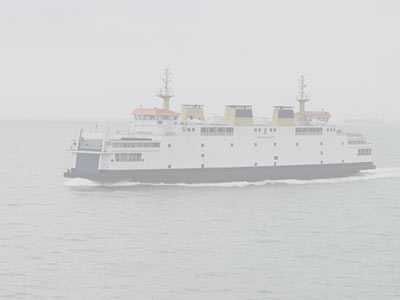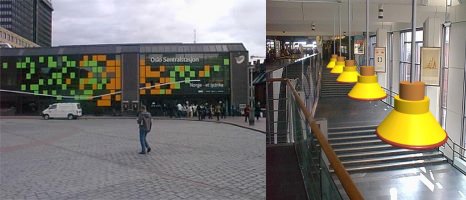I. - Zwanenzang op de Westerschelde von Armeno Alberts
II. - Norway Remixed von Asbjørn Blokkum Flø
[ Deutsche Version ]
A CASSETTE OF THIS PROGRAM CAN BE ORDERED FROM THE
"ORF TONBANDDIENST"
|
[ Top ] ‘Zwanenzang op de Westerschelde’ (Chant du Cygne sur le Westerschelde) is a radiophonic composition based entirely on a mix of the sounds of 4 ferry-boats (Prinses Christina, Prins Willem Alexander, Prinses Juliana and Prins Johan Friso). For many years, these boats formed the connection between Zeeland and Zeeuws Vlaanderen, regions in the south-west of the Netherlands, separated by the water of the Westerschelde. On the 15th of March 2003 a traffic tunnel took over the connection. One day before, the 4 ferry-boats of the PDS (Provinciale Stoomboot Diensten Zeeland) made their last voyage between the two crossing points; Kruiningen – Kerkpolder and Vlissingen – Breskens. This piece won the first price (Premier prix, prix SACEM, prix de l’Association des auditeurs de France-Culture) of the Phonurgia Nova Composition Contest 2003. Produced and commissioned by VPRO Radio, Netherlands. As Listening Proposal, it is recommended for broadcast to the members of the Ars Acustica group of the EBU. |
|
[ Top ] Norway remixed (2003) is a radiophonic sound-art work in six parts with continous transformation. It is based on material and the ideas used in a sound installation with the same name (Norway remixed 2002), presented at the 2002 Ultima Festival of Contemporary Music in Oslo. The installation was designed as a tribute to the ability of sound to bring together people, minds and places, and it was showed in the main hall of Oslo’s Central Railway Station. The installation included a custom built acoustic room with 24 hidden surround loudspeakers. An interface in the centre of the room enabled the public to virtually "play" on elements of 16 different sounds recorded or directly relayed by microphones all over Norway, provided by the regional offices of the Norwegian Broadcasting Corporation and the Sami Radio.The sounds were also transformed by composers Risto Holopainen, Trond Lossius and Asbjørn Blokkum Flø. In the radio version Norway remixed 2003 I try to reconstruct the character of the original idea, for instance the feeling of "walking" through different soundscapes and virtual sound-rooms, while at the same time playing with the possibilities that working-in-linear-time gives you. That’s why more attention has been given to the form of the piece in this version. The piece starts with an introductionary part made up of strongly abstracted sounds from the continuing parts of the piece. Such synthesized sounds start each section and function as a form-making principle. The first part is a mixture of a rural environment and street sounds from the city of Oslo. We can hear the distant bells of the city hall of Oslo, and at the same time the close sounds of a cow eagerly waiting for food. This type of "impossible" rooms are one of the things that gives Norway Remixed its surrealistic character. The second part is focused on the interaction between water sounds and street sounds, and the third part forces the water sounds into a new environment. The fourth part contains again water sounds, birds and human voices – from the Sami parliament of Lappish people in Northern Norway. Several of these sounds are strongly abstracted, while synthetic and acoustic sounds merge. The fifth part starts as a "duet" between industrial noises and a single Sami parliament voice. This then gradually changes into synthetic birds. The sixth and last part contains different human and synthetic sounds. The piece ends in a short passage with synthetic human voices cross-synthesized with bell sounds. Produced and commissioned by NRK, Norway. As Listening Proposal, it is recommended for broadcast to the members of the Ars Acustica group of the EBU. Related links:http://www.nrk.no/programmer/radioarkiv/norge___et_lydrike/2161700.html |

